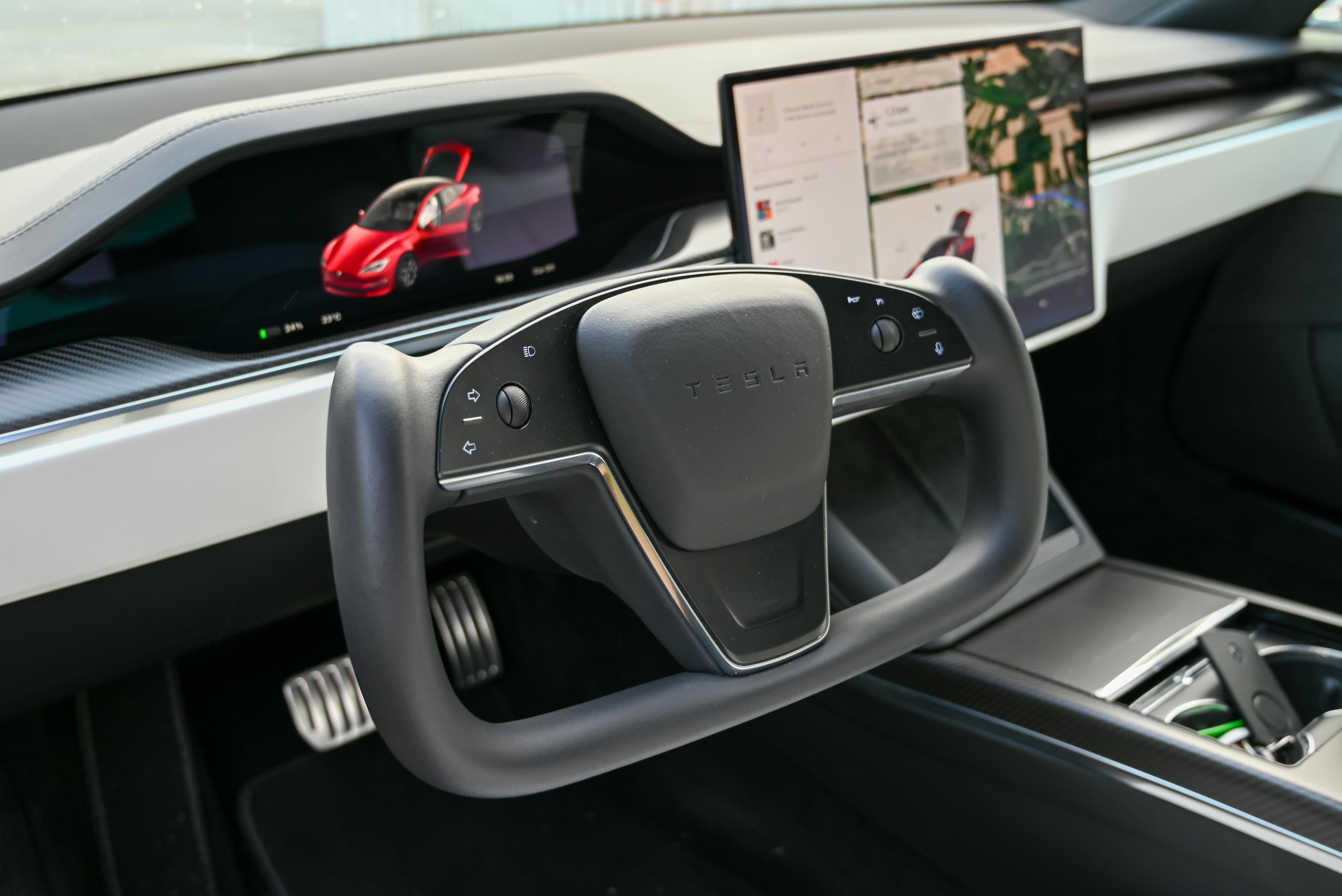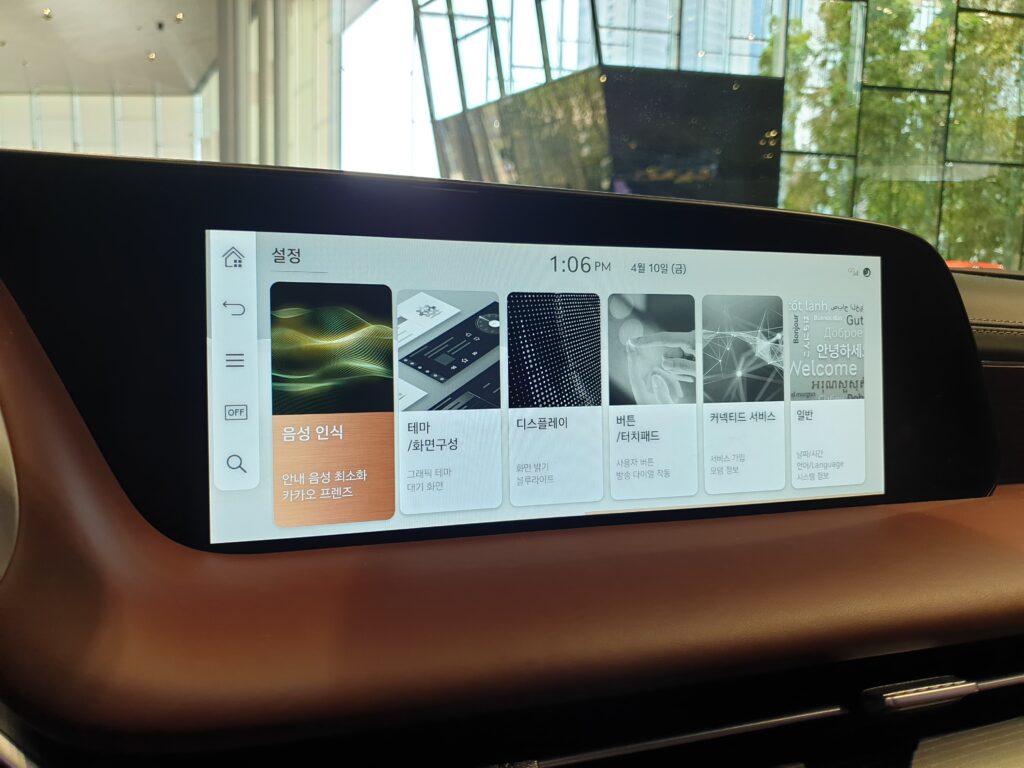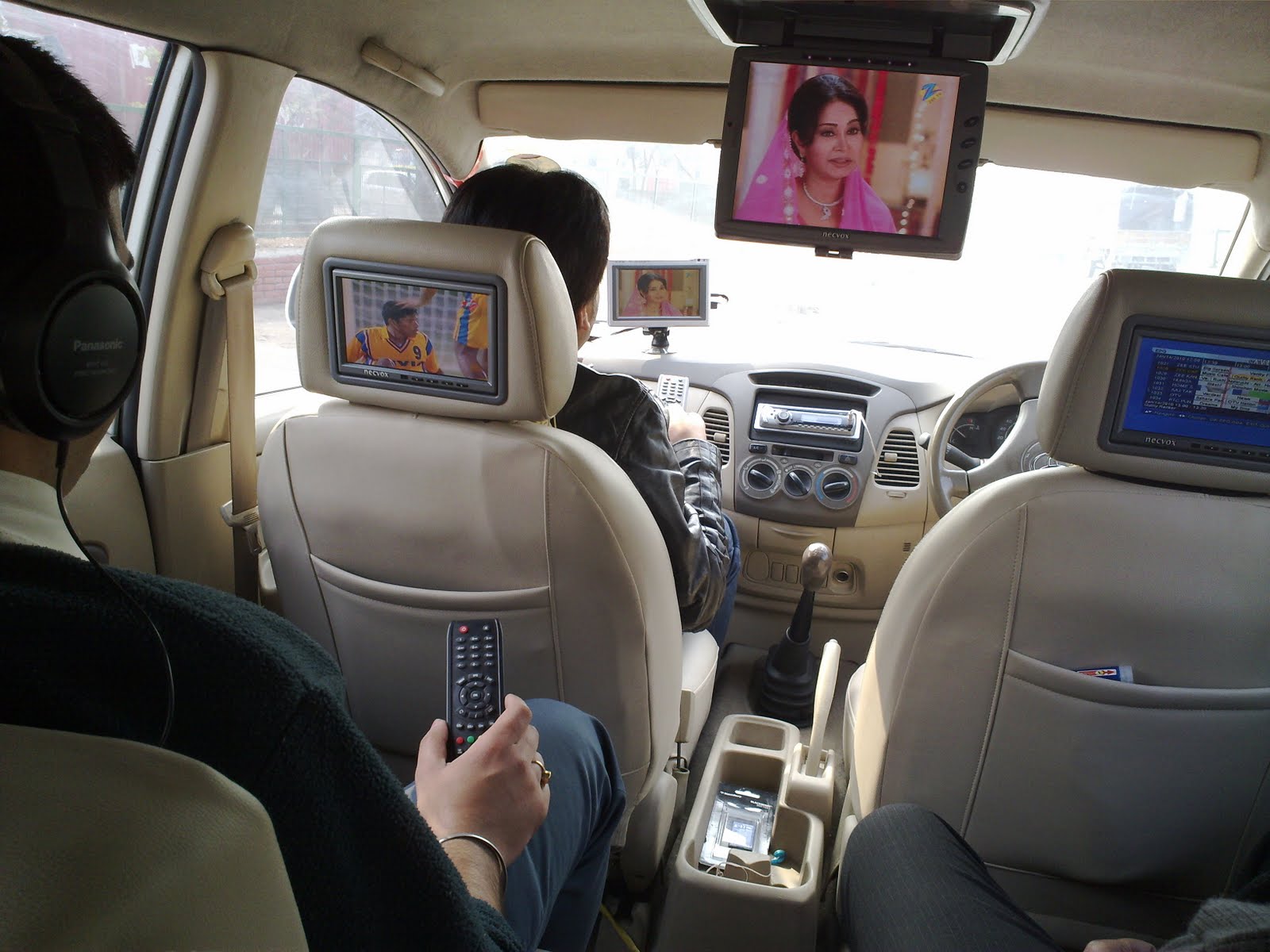
In 2025, the automotive world is no longer solely defined by horsepower or fuel efficiency. Instead, driving has transformed into an holistic experience, where the journey itself is as significant as the destination. Rapid advancements in automotive technology have pushed in-car entertainment from a mere accessory to an essential component of modern vehicles, profoundly enhancing convenience and enjoyment for both drivers and passengers.
Whether you’re tackling a lengthy commute, embarking on an epic road trip, or simply taking a moment to relax in a parked car, a robust and intuitive infotainment system can elevate any ride into a smooth, enjoyable, and connected adventure. Today’s systems offer far more than the basic radio and CD players of yesteryear; they now integrate expansive touchscreens, high-fidelity audio, advanced streaming capabilities, and sophisticated voice controls, turning your vehicle into a true mobile media hub.
We’ve meticulously curated a list of the 13 best in-car entertainment systems available in 2025, ranked primarily by their user experience. This comprehensive guide will explore the standout features, performance, and overall impact of these cutting-edge systems, helping you navigate the myriad options to find the perfect match for your vehicle and lifestyle. Let’s dive into the first seven systems that are setting new benchmarks for in-car technology.

1. **Tesla Infotainment System (2025 Model S/X/Y)**Tesla continues to assert its dominance in the in-car technology sphere with an entertainment system that genuinely feels like a high-end smart tablet integrated seamlessly into the dashboard. The latest iteration, found in the 2025 Model S, Model X, and Model Y, features an expansive 17-inch central display. This impressive screen delivers crystal-clear graphics, ensuring that all visual content, from navigation maps to video streams, is presented with exceptional fidelity.
Driving the system’s formidable capabilities is a dedicated AMD Ryzen chip, which guarantees blazing-fast performance. This powerful processor eliminates lag and ensures a fluid, responsive user experience, whether you’re swiping through menus or launching demanding applications. The system’s entertainment prowess extends to direct support for popular streaming platforms, including YouTube, Netflix, and Twitch, allowing passengers to enjoy their favorite content on the go.
Beyond streaming, Tesla has integrated a selection of built-in games, such as Cuphead and Chess, transforming the vehicle into a gaming arcade during charging stops or waiting periods. For rear-seat passengers, the Model S and X models further enhance the experience with an additional dedicated screen. This thoughtful inclusion solidifies the Tesla infotainment system as more than just a display; it’s a full-fledged entertainment center designed to captivate everyone on board.
Car Model Information: 2024 BMW X5 sDrive40i
Name: Tesla Model S
ModelYears: 2013–present
Alt: A front-three quarter view of a gray Model S
Caption: #2016–2019: First major update
Designer: Franz von Holzhausen
Weight: cvt
Height: cvt
Width: cvt
Length: cvt
Wheelbase: cvt
ElectricRange: cvt
Battery: kWh,lithium-ion battery
Motor: Unbulleted list
Transmission: Reduction drive
Related: Tesla Model X
Layout: Rear-motor, rear-wheel drive,Dual-motor, all-wheel-drive,Tri-motor, all-wheel-drive layout
BodyStyle: liftback,sedan (automobile)
Class: Full-size car
Assembly: Unbulleted list
Production: June 2012 – present
Manufacturer: Tesla, Inc.
Sp: us
Chassis: Unibody
Categories: 2020s cars, All-wheel-drive vehicles, All Wikipedia articles written in American English, All articles containing potentially dated statements, Articles containing potentially dated statements from 2025
Summary: The Tesla Model S is a battery-electric, four-door full-size car produced by the American automaker Tesla since 2012. The automaker’s second vehicle and longest-produced model, the Model S has been described as one of the most influential electric cars in the industry. Car and Driver named it one of the best cars of the year in 2015 and 2016. Its various accolades include the Motor Trend Car of the Year Award in 2013.
Tesla started developing the Model S around 2007 under the codename WhiteStar, with Henrik Fisker appointed as lead designer for the project. After a dispute with Elon Musk, Tesla’s CEO, Fisker was replaced by Franz von Holzhausen who, by 2008, had designed the production Model S’s exterior. Tesla unveiled a prototype of the vehicle in March 2009 in Hawthorne, California. In 2010, Tesla acquired a facility in Fremont, California, to produce the Model S, which was previously owned by General Motors and Toyota. Series manufacture of the car officially began at the Tesla Fremont Factory in June 2012. Tesla carried out the final assembly for European markets at its facilities in Tilburg, Netherlands, between 2013 and 2021.
Constructed mostly of aluminum, the Model S shares 30 percent of its components with the Model X—a crossover SUV that was introduced in 2015. The Model S has undergone several updates during its production, the most prominent ones occurring in 2016 and 2021. These updates have usually included modifications to the motor, such as changes to power or torque, revised exterior elements, and refreshed interior features. One such change included the 2015 introduction of Tesla Autopilot—a partial vehicle automation advanced driver-assistance system. The 2021 update led to the introduction of the high-performance, three-motor Plaid—Tesla’s most powerful model.
In 2015, the Model S was the world’s best-selling plug-in electric vehicle. In 2012, it was included on Time’s list of the Best Inventions of the Year, and the magazine later included it on its list of the 10 Best Gadgets of the 2010s in 2019. In 2014, The Daily Telegraph described the Model S as a “car that changed the world”. Road & Track argued that, with the introduction of the Plaid and features such as the yoke steering wheel, Tesla managed to turn the Model S into “perhaps one of the worst [cars in the world]”.
Get more information about: Tesla Model S
Buying a high-performing used car >>>
Brand: Tesla Model: Model S
Price: $37,758 Mileage: 39,959 mi.
Read more about: Navigating the Digital Road: Which Car Infotainment System Is Easiest to Use in 2025?

2. **Mercedes-Benz MBUX Hyperscreen**Mercedes-Benz’s MBUX Hyperscreen represents a true masterpiece, excelling in both its aesthetic grandeur and its sophisticated functionality. This awe-inspiring display stretches across the entire dashboard, creating a visually stunning centerpiece composed of multiple screens artfully fused under a single, elegantly curved glass panel. The design is not only futuristic but also incredibly intuitive, providing a sense of seamless digital integration within the cabin.
What truly distinguishes the MBUX Hyperscreen is its remarkable ability to adapt to the individual user. Utilizing advanced artificial intelligence, the system learns your habits, preferences, and routines over time, intelligently suggesting features and functions precisely when you need them. This predictive capability personalizes the driving experience, making interactions feel remarkably natural and anticipatory.
For 2025, Mercedes has refined the system further, implementing significant improvements in haptic feedback and response speed. This enhancement makes every touch and interaction feel more tactile and immediate, bridging the gap between digital commands and physical sensation. Coupled with its intuitive voice assistant, activated by a simple “Hey Mercedes,” and deep integration with leading music platforms like Spotify and Tidal, the MBUX Hyperscreen delivers an exceptionally seamless and luxurious entertainment experience.
Read more about: The 8 Most High-Tech Luxury Cars in the Market Right Now: What Tech Blogs and Feature Lists Reveal for Gadget Enthusiasts.

3. **BMW iDrive 9**BMW’s iDrive system has consistently earned high praise for its exceptional balance of intuitive design and cutting-edge technological advancements. The 2025 iteration, designated iDrive 9, pushes these boundaries even further, elevating the user experience to an entirely new level. It features a comprehensively revamped interface, meticulously designed for clarity and ease of use, ensuring that drivers can access functions quickly and efficiently.
This latest version introduces advanced voice commands that are more natural and responsive than ever before, allowing for hands-free control of numerous vehicle functions and entertainment options. Furthermore, iDrive 9 boasts full support for 5G connectivity, providing ultra-fast data speeds crucial for high-quality streaming and seamless online interactions. The screen’s responsiveness to inputs is impressively quick, ensuring that every tap and swipe translates instantly into action.
The layout of iDrive 9 is meticulously clean and highly customizable, allowing users to tailor the interface to their individual preferences and priorities. Both drivers and passengers can indulge in streaming music, podcasts, and even video content, though video playback is safely restricted to when the vehicle is parked. BMW has also ensured wireless and incredibly smooth integration with both Android Auto and Apple CarPlay, offering unparalleled flexibility and connectivity for nearly any mobile device.
Read more about: Read This First: 14 Popular Trucks and SUVs That Become Costly Money Pits Once They Hit 80,000 Miles
4. **Audi MMI Touch Response**Audi’s Multi Media Interface (MMI) Touch Response system is renowned for its elegant design and intelligent operation, consistently delivering a sophisticated user experience. For 2025, this system sees notable enhancements, particularly in its distinctive dual-screen layout. One screen is dedicated to core infotainment functions, while the other manages climate controls and frequently used shortcuts, creating a clear and organized digital cockpit.
The 2025 update brings significantly faster response times and sharper resolution to both displays, ensuring crisp visuals and immediate feedback to user inputs. A standout feature of the MMI Touch Response system is its haptic feedback, which provides a satisfying tactile sensation with every press. This ingenious design element mimics the feel of physical buttons, adding a layer of assurance and reducing the need for drivers to divert their gaze from the road.
Voice control capabilities have also undergone substantial improvements, now allowing for more natural speech commands. Whether you’re adjusting the air conditioning, searching for a destination, or queuing up your favorite playlist, the system understands casual language with impressive accuracy. To round out the entertainment offerings, streaming services like Amazon Music and integrated satellite radio come standard in the majority of new Audi models, providing a diverse range of audio content right from the factory.
Read more about: Navigating the Digital Road: Which Car Infotainment System Is Easiest to Use in 2025?

5. **Genesis Infotainment System (2025 GV80 and G90)**Hyundai’s luxury marque, Genesis, has consistently demonstrated remarkable progress in both design and technological innovation, and its 2025 infotainment system is a shining example of this commitment. Featured prominently in the 2025 GV80 and G90 models, the system boasts a massive widescreen interface that immediately captivates with its luxurious presentation. This expansive display is complemented by full 3D graphics, which bring a new level of visual sophistication and depth to the user experience.
Beyond visual appeal, the Genesis system offers advanced sound tuning options, allowing occupants to tailor the audio output to their precise preferences for an optimal listening environment. A unique and delightful inclusion is the “sounds of nature” feature, along with various calming themes and a custom “mood curator.” These thoughtful additions allow users to set the perfect ambiance within the cabin, transforming the interior into a serene or energizing retreat as desired.
The system fully supports high-definition streaming, ensuring that all video content is delivered with crisp clarity and detail. Seamless integration with Apple CarPlay and Android Auto is standard, providing robust smartphone connectivity, and the system benefits from convenient over-the-air software updates, ensuring it remains current and evolves with new features. Overall, the Genesis infotainment system is a sleek, fluid, and perfectly balanced fusion of opulent design and cutting-edge automotive technology.
Car Model Information: 2024 Genesis GV80 3.5T
Name: Genesis GV80
ModelCode: JX1 (crossover),JX1C (coupe crossover)
Manufacturer: Genesis Motor
Production: 2020–present
ModelYears: 2021–present
Assembly: Ulsan
Designer: SangYup Lee
Class: Executive car,Crossover (automobile)
BodyStyle: SUV
Layout: unbulleted list
Platform: Hyundai-Kia M platforms
Related: Genesis G80
Engine: unbulleted list
Powerout: unbulleted list
Transmission: Automatic transmission
Wheelbase: cvt
Length: unbulleted list
Width: cvt
Height: unbulleted list
Weight: unbulleted list
Sp: uk
Categories: All-wheel-drive vehicles, All Wikipedia articles written in British English, Articles containing Korean-language text, Articles with short description, Cars introduced in 2020
Summary: The Genesis GV80 (Korean: 제네시스 GV80) is a mid-size luxury crossover SUV manufactured and marketed by Genesis, Hyundai’s luxury division.
Get more information about: Genesis GV80
Buying a high-performing used car >>>
Brand: Genesis Model: GV80
Price: $53,481 Mileage: 30,175 mi.
Read more about: Navigating the Digital Road: Which Car Infotainment System Is Easiest to Use in 2025?

6. **12.4″ Android 4K Portable Car TV with Touchscreen and Wireless Casting**Designed with families and road trip enthusiasts in mind, the 12.4″ Android 4K Portable Car TV delivers an outstanding entertainment hub with a crystal-clear touchscreen and seamless wireless casting. Its vibrant 4K HD IPS touchscreen provides an immersive viewing experience, making movies and shows come alive during transit. This portable unit runs on a smooth Android 10.0 OS, supporting popular streaming apps like Prime Video via APKPure and receiving automatic OTA updates for continued improvement.
Versatility is a core strength of this device; it is compatible with over 98% of car models, thanks to a sturdy metal mounting bracket that ensures easy and secure installation. Beyond its in-car utility, it conveniently doubles as a tablet for home use, offering extended value. This dual functionality means entertainment doesn’t stop when the journey ends.
Connectivity options are extensive, including WiFi 5G for fast internet access, along with AirPlay and Android Miracast for effortless phone mirroring. HDMI allows connections to external devices like game consoles, while Bluetooth facilitates wireless audio streaming. Built-in speakers deliver clear sound, complemented by USB ports for additional multimedia options, ensuring everyone remains engaged throughout long drives.
Potential users should be aware that optimal performance may require some familiarity with app installations and OTA updates. The 12.4-inch size, while offering an expansive view, might not fit comfortably into all vehicle headrests or interior spaces. Furthermore, its dependence on wireless connections could occasionally affect performance in areas with weak WiFi or signal interference, a common consideration for portable devices.
**Factors to Consider When Choosing a Car Entertainment System**
When selecting the ideal car entertainment system, several crucial factors come into play to ensure it perfectly aligns with your needs and vehicle. These considerations are vital for guaranteeing a system that not only performs well but also enhances your driving experience effectively.
**Screen Size and Resolution**
Choosing the appropriate screen size and resolution is fundamental for an optimal in-car entertainment experience. Larger screens, typically ranging from 14 to 15.6 inches, significantly enhance immersion for passengers, making movies and games more captivating. High-resolution displays, such as Full HD (1920×1080) or 4K (3840×2160), are essential for delivering sharper images and crisper picture quality, ensuring visuals remain clear and detailed. Touchscreens benefit greatly from high pixel density, which improves responsiveness and makes navigation smoother. IPS panels contribute to better color accuracy and wider viewing angles, allowing everyone to enjoy a great view regardless of their seating position. It is also important to match the screen resolution with your media formats to prevent pixelation and maintain picture clarity during playback, collectively ensuring a visually stunning and enjoyable journey.
**Compatibility and Connectivity**
Selecting a car entertainment system that integrates seamlessly with your vehicle requires careful attention to its compatibility and connectivity features. First, always confirm that the system supports your vehicle’s power voltage, typically 12V or 24V, to ensure proper operation. Verify that it fits your dashboard or headrest mounts for straightforward installation. Crucially, check if the input and output options—such as HDMI, USB, SD card slots, or AV ports—match your intended media devices. Wireless features like WiFi, Bluetooth, AirPlay, or Miracast are indispensable for effortless screen mirroring and audio streaming. Finally, confirm compatibility with your mobile devices’ operating systems, whether iOS or Android, to guarantee smooth integration and avoid technical complications.
**Audio and Video Quality**
Exceptional audio and sharp visuals can profoundly transform your driving experience, making every form of entertainment more enjoyable and engaging. High-resolution screens, capable of 1080P or 4K, deliver crisp, detailed images that draw you into your media content. Ensuring support for multiple media formats like MP4, AVI, and MKV guarantees broad compatibility across various devices without compromising quality. Features such as anti-glare screens and adjustable viewing angles are vital for reducing reflections and improving visibility, especially in bright or fluctuating lighting conditions. For sound, robust built-in stereo speakers or external audio options are key to providing clear, high-fidelity sound that perfectly complements video playback. Utilizing advanced audio codecs and efficient Bluetooth transmission can further enhance clarity and minimize distortion, contributing to a consistently crisp and immersive audio experience.
**Installation Ease and Compatibility**
When installing a new in-car entertainment system, ensuring its compatibility with the vehicle’s power supply and interior layout is crucial for a smooth installation. First, please check whether your vehicle uses a 12V or 24V power supply and confirm whether the system supports your specific model. Look for universal mounting brackets or adjustable brackets, which are designed to fit most headrest and interior designs, thereby significantly simplifying the installation process. Be sure to confirm whether the physical dimensions of the system and its installation method (whether designed for the dashboard, headrest or portable) are in line with the available space of your vehicle and your aesthetic preferences. Choose plug-and-play or systems with extremely low wiring requirements to save time and reduce installation complexity. In addition, please confirm the compatibility of the system with your existing vehicle functions (such as AUX, HDMI or Bluetooth) so that the new system can be seamlessly integrated into your vehicle’s current multimedia Settings.
**Additional Features and Support**
Incorporating advanced features like built-in Bluetooth, WiFi, and comprehensive app support can significantly boost the versatility and convenience of your car entertainment system. These capabilities enable seamless connection to your devices, effortless music streaming, and direct access to various applications. Wireless screen mirroring, facilitated by technologies such as AirPlay or Miracast, simplifies content sharing from your phone, effectively eliminating cable clutter. Safety features, including backup cameras, parking sensors, and crash sensors, not only enhance vehicle security but also integrate smoothly with your entertainment system, creating a more intuitive and safer driving experience. Compatibility with external devices like gaming consoles, streaming sticks, and USB drives provides boundless media options. Furthermore, reliable after-sales support—encompassing warranties, consistent software updates, and responsive technical assistance—is crucial to ensure your system remains functional, current, and stress-free to maintain over its lifetime.
**Frequently Asked Questions**
Understanding common queries can further guide your decision-making process when choosing and utilizing a car entertainment system. Here are some answers to frequently asked questions:
**What Are the Compatibility Requirements for Different Car Entertainment Systems?**
Compatibility requirements are diverse, yet a general rule is to ensure the system is designed to work with your car’s specific make and model. Key checks include looking for systems that support standard connections like Bluetooth, USB, or auxiliary ports. It’s also essential to verify if your vehicle’s existing infotainment system can integrate seamlessly with the new unit. In some cases, you might need to acquire specific adapters or perform additional software updates to ensure full functionality. Addressing these requirements upfront helps to prevent compatibility issues and ensures a smooth, trouble-free setup.
**How Do I Install and Set up Advanced Headrest Monitors?**
To properly install and set up advanced headrest monitors, you should first confirm that your vehicle provides the necessary power supply and that you have compatible headrest mounts. Begin by carefully connecting the monitors to the power source and your vehicle’s audio system, diligently following the manufacturer’s detailed instructions. Once the physical installation is complete, power on the monitors, adjust the display settings to your preference, and pair them with your device if required for wireless functionality. Always double-check all connections to ensure they are secure and stable before enjoying your newly personalized in-car entertainment system.
**What Safety Features Are Integrated Into Modern Car Entertainment Systems?**
Modern car entertainment systems are increasingly designed with robust safety features, much like an attentive co-pilot. They now commonly include technologies such as lane departure warnings, adaptive cruise control, and real-time alerts designed to mitigate driver distractions. Some advanced systems are even programmed to temporarily pause media playback if they detect that you are unintentionally drifting out of your lane. These sophisticated features work in concert to significantly enhance overall driving safety, helping to ensure your journey remains both enjoyable and accident-free by keeping your attention where it needs to be.
**How Do These Systems Impact Overall Vehicle Performance and Battery Life?**
The impact of modern car entertainment systems on vehicle performance and battery life can vary, but contemporary designs are often optimized for efficient power consumption to minimize strain. When you use energy-efficient features, your car typically maintains smooth operation, and its battery lasts longer without noticeable drain. However, if the system is overloaded with high-powered displays or continuous, resource-intensive streaming, you might observe a faster battery drain and slight dips in overall vehicle performance. Mindful usage and moderation in deploying the most demanding features can help maintain your vehicle’s efficiency.
**What Are the Best Options for Parental Controls and Device Restrictions?**
For families seeking to create a safe and controlled environment within their vehicle, systems like Apple CarPlay and Android Auto offer robust parental controls and comprehensive device restrictions. These platforms allow you to precisely set limits on screen time and effectively block access to inappropriate content, providing invaluable peace of mind during family drives. With their intuitive interfaces and highly customizable options, you maintain full control over what your children can view and interact with, ultimately ensuring a safer, more focused, and enjoyable journey for everyone in the car.
Choosing the right in-car entertainment system is an investment that truly transforms your driving experience, turning mundane commutes into engaging adventures. With the wide array of cutting-edge options available in 2025, from seamlessly integrated OEM solutions to versatile aftermarket and portable monitors, there’s a perfect match for every vehicle and lifestyle. Whether your priority is cinematic visuals, high-fidelity audio, or smart voice assistance, upgrading your system can significantly enhance connectivity, convenience, and safety on the road. Embrace the future of automotive technology and elevate every journey into a next-level experience.



